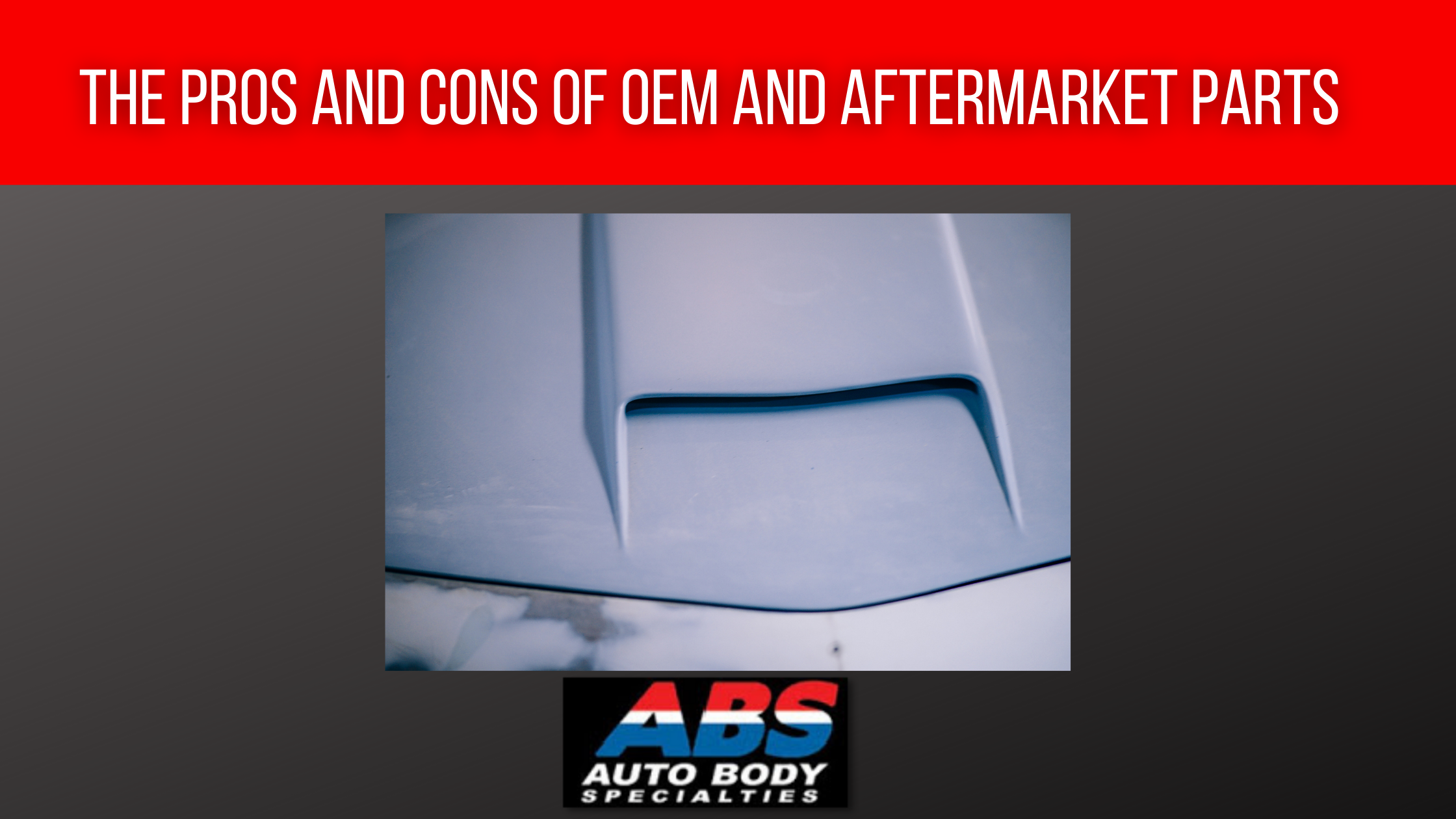
When it comes to replacing vehicle parts, there are two kinds to choose from. OEM and aftermarket. At Auto Body Specialties, we get asked a lot of questions regarding OEM and aftermarket parts. What’s the difference? Which parts are higher quality? Why can I use aftermarket parts for some repair jobs but not others? Read on to learn the pros and cons of OEM and aftermarket parts and learn some answers to common questions about them.
What is the difference between OEM and aftermarket parts?
OEM stands for original equipment manufacturer. This means the parts are made by the same company that manufactures the vehicle. Aftermarket parts are produced by a different parts company and are designed to work with as many vehicle makes as possible. Because there is a difference in the design of OEM and aftermarket parts, the aftermarket parts won’t always provide the same fit of OEM parts.
What is better? OEM or aftermarket parts?
Aftermarket parts may be cheaper than OEM but there are cons to using them. Because of this, using aftermarket parts may outweigh the savings you will get out of them. OEM parts often are more high quality, have better performance, and have a better warranty. When choosing between aftermarket and OEM parts, it may be better to approach a dealership for advice. Dealerships often recommend OEM parts because they are higher quality.
When should you use OEM parts as opposed to aftermarket?
If you are like most of our customers, you are probably visiting this site because you do collision repair. When it comes to being a collision repair tech, using OEM parts is the best idea because aftermarket parts may not fit properly or have the correct crumple zone for crashes. Also, if you are leasing a car, using aftermarket parts can decrease a vehicle’s value. Using them to repair your leased vehicle can also cost you all or part of your security deposit.
 US Dollars
US Dollars
 CANADIAN
CANADIAN
